MİTOLOJİDEN GÜNÜMÜZE TARSUS ADI NEREDEN GELMEKTEDİR? ORIGINS OF THE NAME TARSUS FROM MYTHOLOGY TO THE PRESENT DAY
10.10.2019Tarsus, kuruluşundan itibaren adı ve yeri hemen hemen hiç değişikliğe uğramadan günümüze kadar ulaşan Anadolu’nun en eski kentlerinden biridir. 8000 yıllık geçmiş tarihiyle birçok medeniyete ev sahipliği yapmış Tarsus’un adının nereden geldiği konusunda birçok araştırma yapılmıştır. Tarsus'un ismi ve kuruluşu hakkında, mitolojik, sözlü veya yazılı kaynaklarda çeşitli bilgiler vardır. Bu anlatımların çoğu tarihsel bir gerçek olarak kabul edilmemekle birlikte bir kısmı efsane olarak kabul edilmekte ve bu durum bizi mitolojiye kadar götürmektedir. Antik çağlarda, Tarsus Çayı'na Kilikya'nın yerli halkı Kydnos adını vermiştir. Kydnos mitolojide nehir tanrısına verilen isimdir. Azra Erhat'ın Mitoloji Sözlüğü kitabında Kydnos şöyle anlatılmaktadır: "KYDNOS: Kilikya'da bugün Tarsus Çayı diye anılan ırmağın tanrısı. Ana tarafından Lapetos'un torunu sayılır. Kydnos'un Parthenios adlı bir oğlu varmış. Kydnos Irmağı'nın denize döküldüğü yerde bir şehir kurup ona PARTHENİA adını vermişler.”
Tarihçilerin kayıtlarına, araştırma sonuçlarına ve Eski Yunan mitolojisinin başka bir anlatımına göre, Tarsus adını mitolojide geçen Pegasus (kanatlı uçan at) veya Bellerofontes’ten almıştır. Pegasus veya Bellerofontes Kilikya Ovası'nda yolunu şaşırmış ve bugün Tarsus'un bulunduğu yerde ayağı sakatlanmış. Pegasus yaşadığı bu sıkıntıdan dolayı uzun süre Tarsus’ta yaşamış ve Pegasus’un hayatı garip bir şekilde bu şehirde son bulmuş. Tarsus’un bulunduğu yerde ayağı sakatlanmış olduğundan kente Latince ayak tabanı anlamına gelen TARSOS adı verilmiş ve bu isim günümüzde Tarsus olarak anlam kazanmıştır.
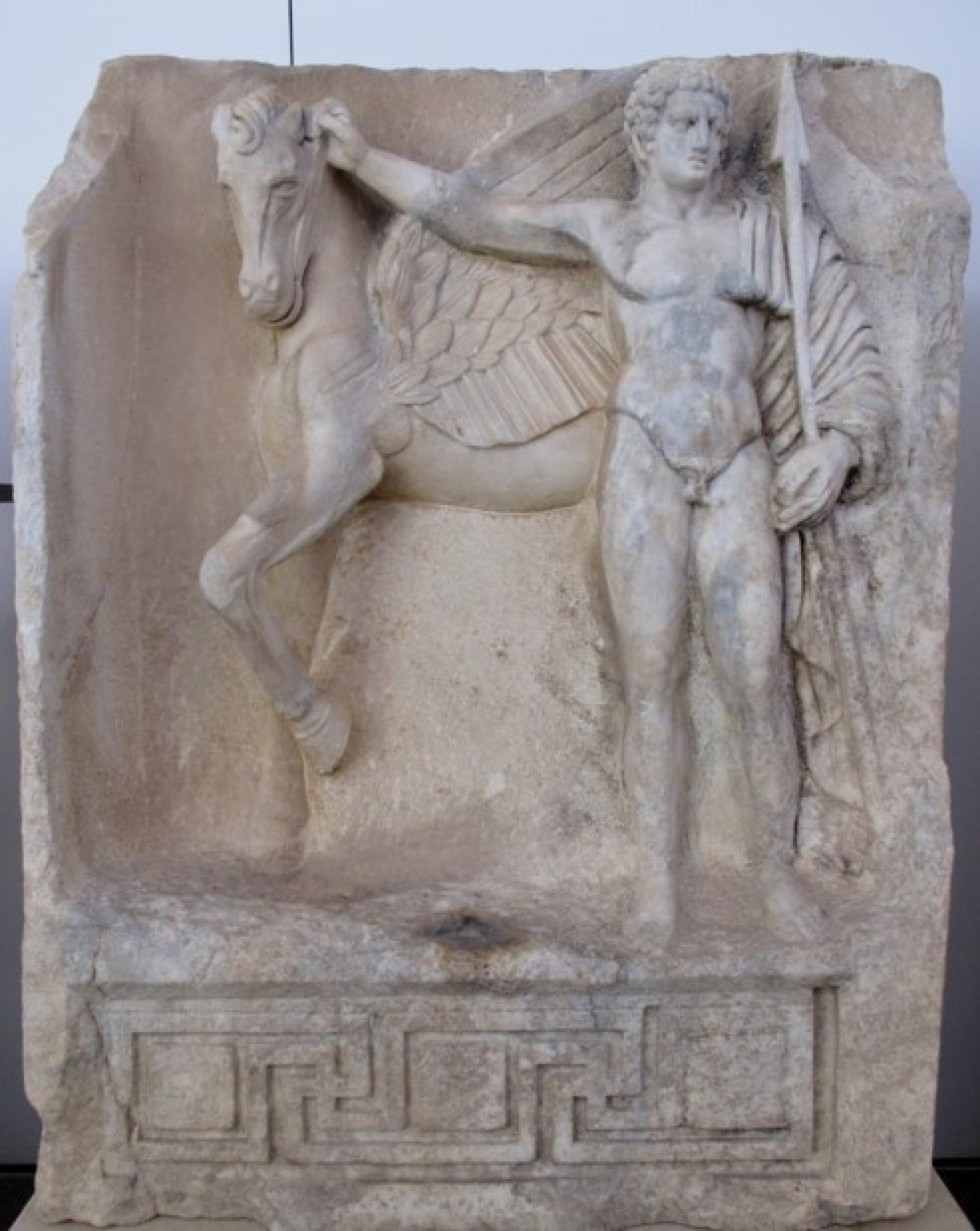
Resim-1: Pegasus ayağı sakatlanınca uzun süre Tarsus’ta kalmış. Latince ayak tabanı anlamına gelen TARSOS adını vermiş.
Başka bir mitolojik efsaneye göre, bu kentin kurucusu Perseus'dur. Mitolojinin kahramanlarından biri olan Perseus, Hitit döneminde Andrasos olarak bilinen bir köyün yerinde Tarsus kentini kurmuştur. Efsaneye göre Perseus’un, rüyasında attan inerken ayak tabanını kaybettiği yere, Tarsus şehrini yaptırmış olduğu anlatılmaktadır. Tarsus adı insan anatomisinde de kendine yer bulmuştur. Bir kent adı olarak Tarsus, mitolojide geçen ayak tabanı ile insan anatomisinde geçen ayak tabanı veya ayak tarak kemiklerini oluşturan TARSUS kelimesi ile aynıdır. TARSUS adı mitolojide, insan anatomisinde ve bir kent adı olarak tarihte başka bir örneği olmayacak şekilde yerini almıştır.
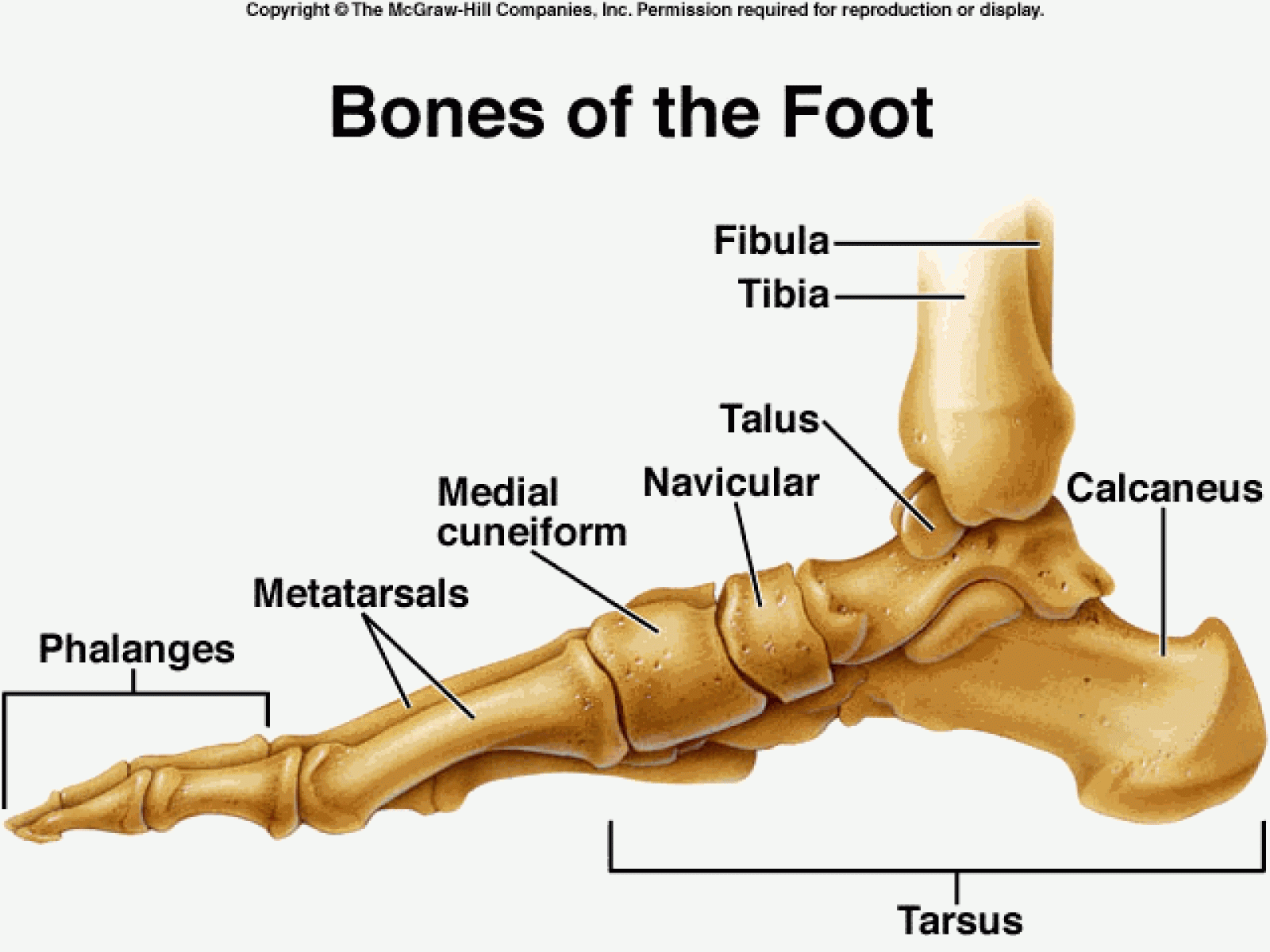
Resim-2: Anatomik olarak Tarsus, ayak tabanı kemiklerine verilen isimdir.
Diğer bir efsaneye göre Tarsus, Tarım Tanrıçası Demeter'in oğlu Triptolemos tarafından kurulmuştur. Antik Çağ'da Tarsus önemli bir tarım merkezi olup, bu özelliği antik Tarsus sikkelerinde betimlenmiştir. Başka bir efsaneye göre tufandan sonra suların çekilmesi ile kurulan bu şehre Tersein (kurutmak) adı verilmiş. Tufandan sonra sular çekilince ilk önce burası kurumuştur. Bu şehir bugünkü Tarsus'tur.
Tarsus şehrinin ne zaman ve kimler tarafından kurulduğu da kesin olarak bilinmemekle birlikte bu konuda da farklı görüşler mevcuttur. Tam manasıyla bir şark memleketi olup tamamen şark kültürü hâkim olan Tarsus, Helenistik dönemde ve özellikle de Romalılar döneminde Yunanlılaştırılmıştır. Yunan araştırmacılar Yunancada bulunan TARSOS kelimesinden esinlenerek şehrin kuruluşunu kendi mitolojik unsurları içerisine dahil etmek çabası içerisine girmişlerdir. Yunan efsanesine göre, şehrin kurucusu Kilikya Tanrısı Sandon ile bir tuttukları Herakles'tir. Herakles'in resimleri M.Ö.4. yüzyıla ait Tarsus sikkeleri üzerinde Sandon (BAAL TARZ) yani şehir tanrısı olarak görülmektedir. Sandon'un çok eski bir Kilikya tanrısı olduğu da genellikle kabul edilmektedir. Şehrin kuruluşunun böyle bir tanrıya atfedilmesi, onun tarihin eski devirlerinde meydana geldiğini anlatmaktadır. 1875 yılında Tarsus Eski Ömerli Mahallesi'nde bulunan ve şu anda İstanbul Arkeoloji Müzesi'ndeki bronz Herakles heykeli bu tanrıya Tarsus'ta tapınıldığının bir kanıtıdır. Yine bu çaba içerisinde olan M.Ö. 64 yılında Amasya'da doğan antik çağ yazarlarından Strabon'un Anadolu'nun Coğrafyası kitabında Tarsus’un Argoslular tarafından kurulduğunu belirtmektedir: 'Tarsos'a gelince, o bir ovada uzanır. İo'yu araştırmak üzere Triptolemos'la birlikte dolaşan Argoslular tarafından kurulmuştur." Tarsus’un ismi önce Grekçe Tarsos, daha sonra Latince Tarsus olarak kullanılmıştır.
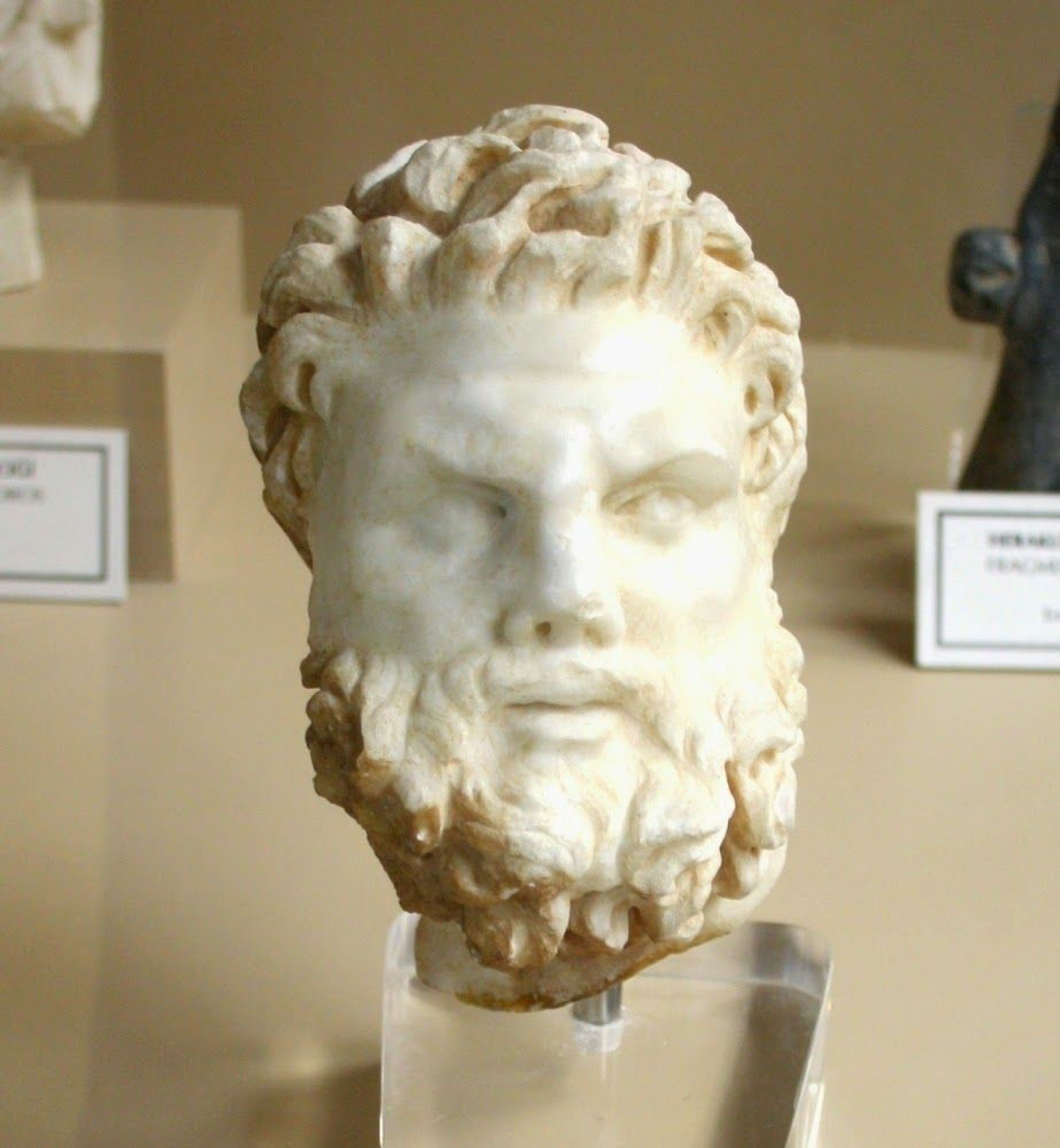
Resim-3:İstanbul Arkeoloji Müzesi'nde Herakles heykeli
Yazılı kaynaklarda ise kentin adı ilk kez Hitit metinlerinde TAR-ŞA (URU-TAR-SA) biçiminde yazılmıştır. Tarşa olasılıkla tüm Çukurova'yı içine alan ve Kuzey Mezopotamya'daki Hurrilerin kurduğu Kizuvatna krallığının merkezi olup, M.Ö.5. ve 4. yüzyıllarda Tarsus'un gerek kültürel gerekse etnolojik bakımdan tamamen doğu memleketi özelliği taşıdığını görürüz. Bu yüzyıllarda Tarsus halkı arasında bir kısım Yunanlıların varlığı belli ise de, bunlar ticaret amacıyla Tarsus'a gelip yerleşen ve azınlıkta olan kimselerdir. Tarsus’ta M.Ö. 5. yüzyılın ikinci yarısından ve daha ziyade 4. yüzyıldan itibaren görülen Yunan sikkelerinin varlığı, ekonomik amaçlarla büyük ticaret şirketleri tarafından bastırılmış olma ihtimali yüksektir. M.Ö. 401 yılında Ksenofon'un Anabasis isimli eserinde Tarsus ismi geçmekte ve kentin Kilikya Kralı Syennessis tarafından yönetim merkezi olarak kullanıldığı anlatılmaktadır. M.Ö.5 yüzyılın ikinci yarısından itibaren Tarsus'a ait sikkeler üzerinde, kentin ismi gerek Aramice ve gerekse Grekçe yazı ile TARZ ve TEPEİ şekillerinde görülmektedir. Ama Tarsus ismine çok daha önce Asur kaynaklarında, Asur Kralı 3. Salmannassar (M.Ö. 859-825) ve Sanherip (M.Ö. 704-68 l)'e ait belgelerde TARZİ şeklinde rastlanılmaktadır. Antik devir yazarlarından Abydenos ve Beresos'a göre Asur Kralı Sanherip, Tarsus'u M.Ö.696 senesinde Babil şehrini örnek alarak inşa etmiştir. Aynı zamana ait bir başka Asur metninde ise kentin adı TARSİS biçiminde yazılmıştır. Demek oluyor ki. M.Ö.9. yüzyılın birinci yarısında, Tarsus ismi ve şehri Asur Kralı 3. Salmannassar'ın Kilikya'ya yaptığı seferlere ait resmi belgelerde, o zamanki Kilikya Prensliği'nin merkezi olarak anılmaktadır. Perslerin Tarsus’ta basılan sikkeleri üzerinde de Tarsus adına rastlanmaktadır.
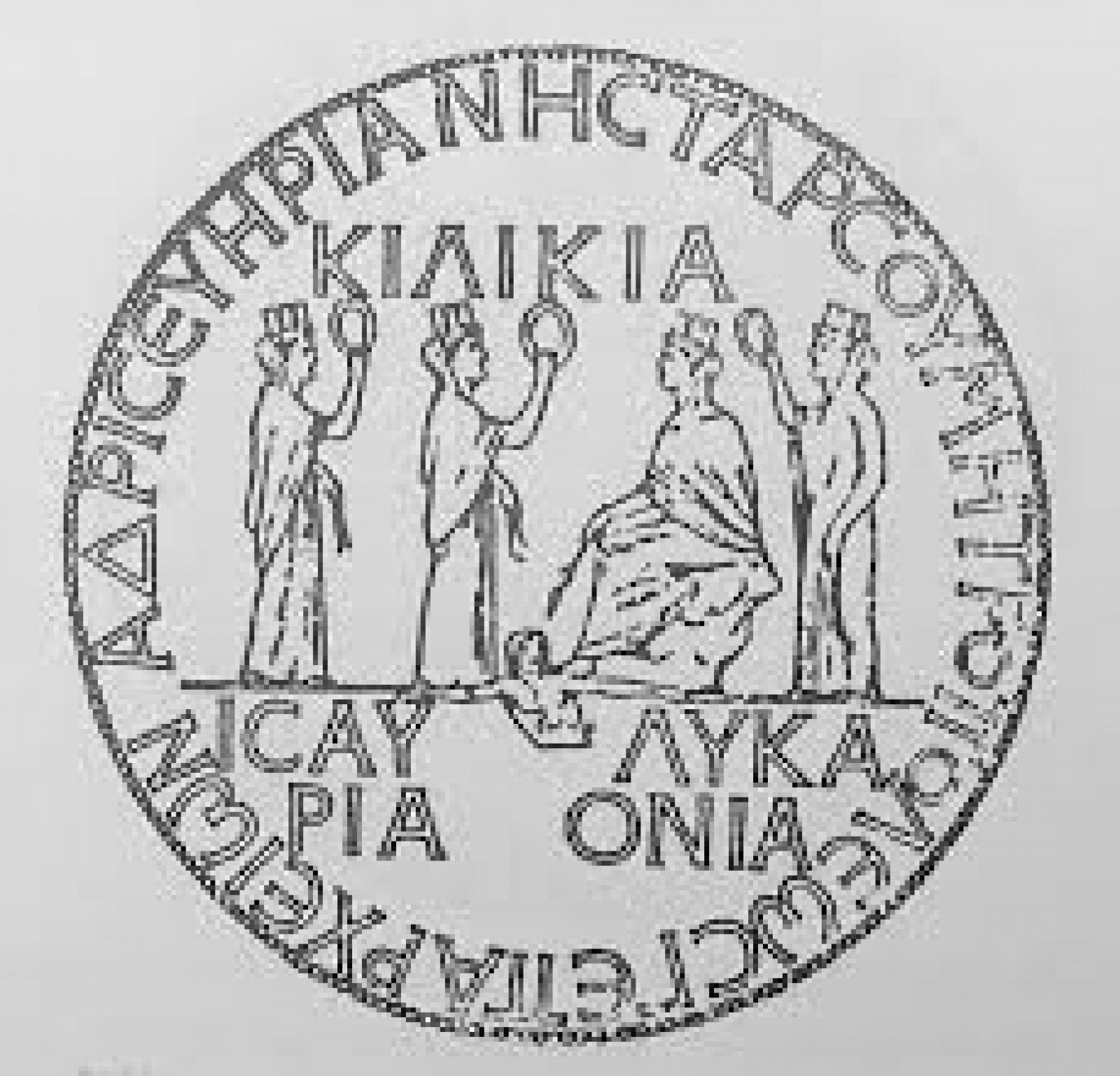
Resim-4:Kilikya Sikkeleri
Tarsus’un ismine ve kuruluşuna dair Yunan efsanelerinin hemen hepsi Romalılar dönemine aittir. Ancak yapılan araştırmalarda Tarsus’un çok daha eski dönemlerde de var olan bir şehir olduğu ortaya çıkmıştır ve bu rivayet geçerliliğini yitirmiştir. M.Ö. 8. ve 9. yüzyılda, Asurlular zamanında Tarsus bir idare merkezi olarak görüldüğüne göre Tarsus'un kuruluşunun ve isminin o tarihten daha eski zamanlara gitmesi gerekmektedir, Tarsus isminin, yine çok eski bir Kilikya tanrısı olan TARHON veya TARKON'dan gelmiş olması da muhtemeldir. Bu tanrı Hitit metinlerinde TARHUNT şeklinde gösterildiği gibi, Hititler zamanında ve daha önce, Kilikya'nın da dahil bulunduğu ARZAVA Krallığının 4. Amenofis ile siyasî ilişkide bulunduğu prensi TARHUNDARABA ismini taşımaktadır. Bundan başka Kilikya'da bulunan kitabelerde pek çok TARKU, TARKON ve bu kökle meydana gelen kişi isimlerine rastlanmaktadır. Tarsus'un isminin TARHON veya TARKON'dan türemiş olduğunu kabul edersek, bunun daha sonra Asur dilinde TARZI, Aramice'de TARZ, Grekçe'de TERSİ (TEPIKON) ve nihayet Latince de TARSOS şeklini aldığını görürüz. Selefkoslar, olasılıkla 1. veya II. Antiokhes zamanında kentin adını Kydnos Antiokhiea'sı olarak değiştirirler. Tarsos adı Antiokhos Filopator IX (M.Ö. 113-95) zamanında yeniden kullanılmaya başlanmıştır. M.Ö. 1. yüzyıl sikkelerinin üstünde TARSOS adı yazılıdır. Roma döneminde, Tarsus çeşitli imparatorlar adına lakaplar almıştır. Bu isim ya da lakaplar imparatorun yaşayışına göre Tarsus'a kısa imtiyazlar tanımıştır. Tarsus yeniden imar edilmiş ve halkın yaşam düzeyini arttırıcı tedbirler alınmıştır. Bu çalışmalardan ve imparatorların isimlerinden dolayı Tarsus'a verilen lakaplar şöyle sıralanmıştır: Roma İmparatoru Hadrianus'tan dolayı HADRLANE, imparator Commodius'dan dolayı KOMMODİANE, Severius'tan dolayı SEVERİANE, Caracalla'dan (M. Aurelius Anloninius) dolayı ANTONİNİANE, Severius Alexander'den dolayı SEVERİANE, Gordion zamanında da GORDIANE adıyla anılmıştır.
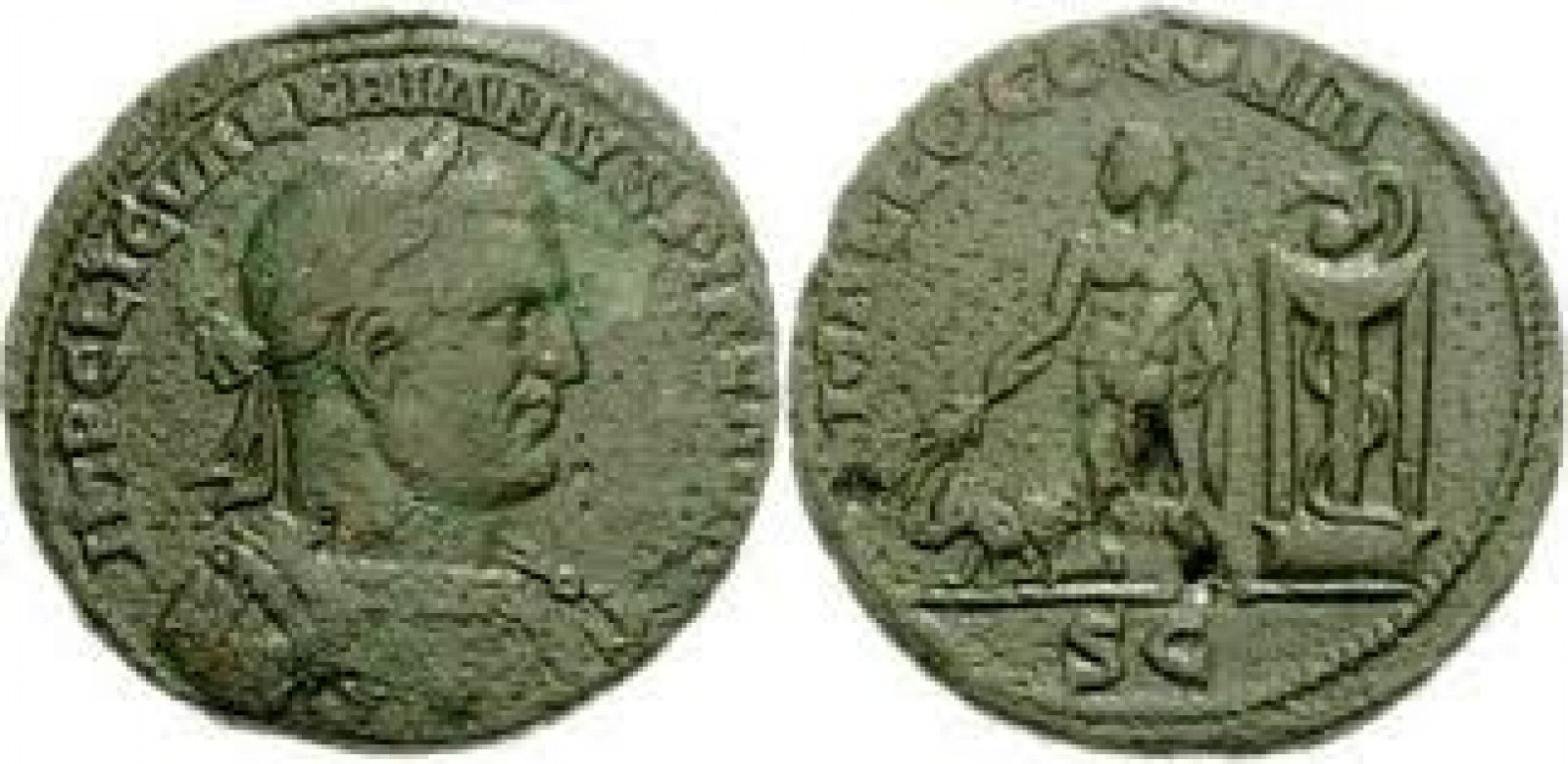
Resim-5:Kilikya Sikkeleri
Türk-İslam araştırmalarında Tarsus’un kimler tarafından kurulduğu ile ilgili değişik görüşler ortaya konmuştur. Arap ve Osmanlı kaynaklarında Tarsus, TERSÎS ve TARSÛS şeklinde kaydedilir. Arap kaynaklarında ve doğu kökenli tarihçilerin kitaplarında Tarsus'un ismi ile ilgili birçok açıklamalar vardır. Bunlardan: Ruhul-beyanda: "... O şehir Tarsus'tur. Cahiliye devrinde ise EFSUS'tu." diye yazar. Kimi Arap kaynaklarında Tarasus olarak da ifade edilmiştir. Yazarı bilinmeyen el yazması bir kitapta ise Tarsus anlatılırken; "... Ve bunun adı Tevrat'ta Efsus'tur ve İncil'de Arsus'tur. Ve Arap dilince Tarsus'tur." diye bahseder. İslâm araştırmaları arasında Tarsus'un, Adem'in oğlu Şit Peygamber tarafından kurulduğu, kabrinin de Tarsus'ta olduğu efsanesi yer almaktadır. Şemseddin Sami, Tarsus’un Fenikeliler tarafından kurulduğunu belirtmektedir. Tarsus “Miratüliber” adlı Arap tarihine göre, Nuh Peygamberin torunu TARASİS tarafından kurulmuştur. Evliya Çelebi ise Seyahatnâmesinde, Tarsus’un bir rivayete göre Hz. Nuh’un oğlu Sam’ın oğlu Bakan’ın oğlu Rum’un oğlu TARSUS tarafından bina edildiğini yazmaktadır. Tarsus tarihi ile ilgi olup yazarı belli olmayan ve Zilhicce 1153 (4 Mart 1741) tarihinde yazıldığı anlaşılan bir risaleye göre de Hz. Nuh’un torunu Yafes’in oğlu Laon’un dört oğlu vardır. Birinin adı Ayas, birinin adı Misis, birinin adı Adana ve diğerinin adı da Tarsus’tur. Tarsus şehrinin de bu Laon’un oğlu tarafından inşa edildiği ve adının da buradan geldiği belirtilmektedir. Yakut El-Hamevi, yazmış olduğu coğrafya ansiklopedisi mahiyetindeki eserinin Tarsus maddesinde, Tarsus isminin Rum asıllı bir kelime olduğunu, Tarsus şeklindeki söyleminin galat olup aslının TERASUS olduğunu belirterek Evliya Çelebi ile aynı görüşü paylaşmaktadır.
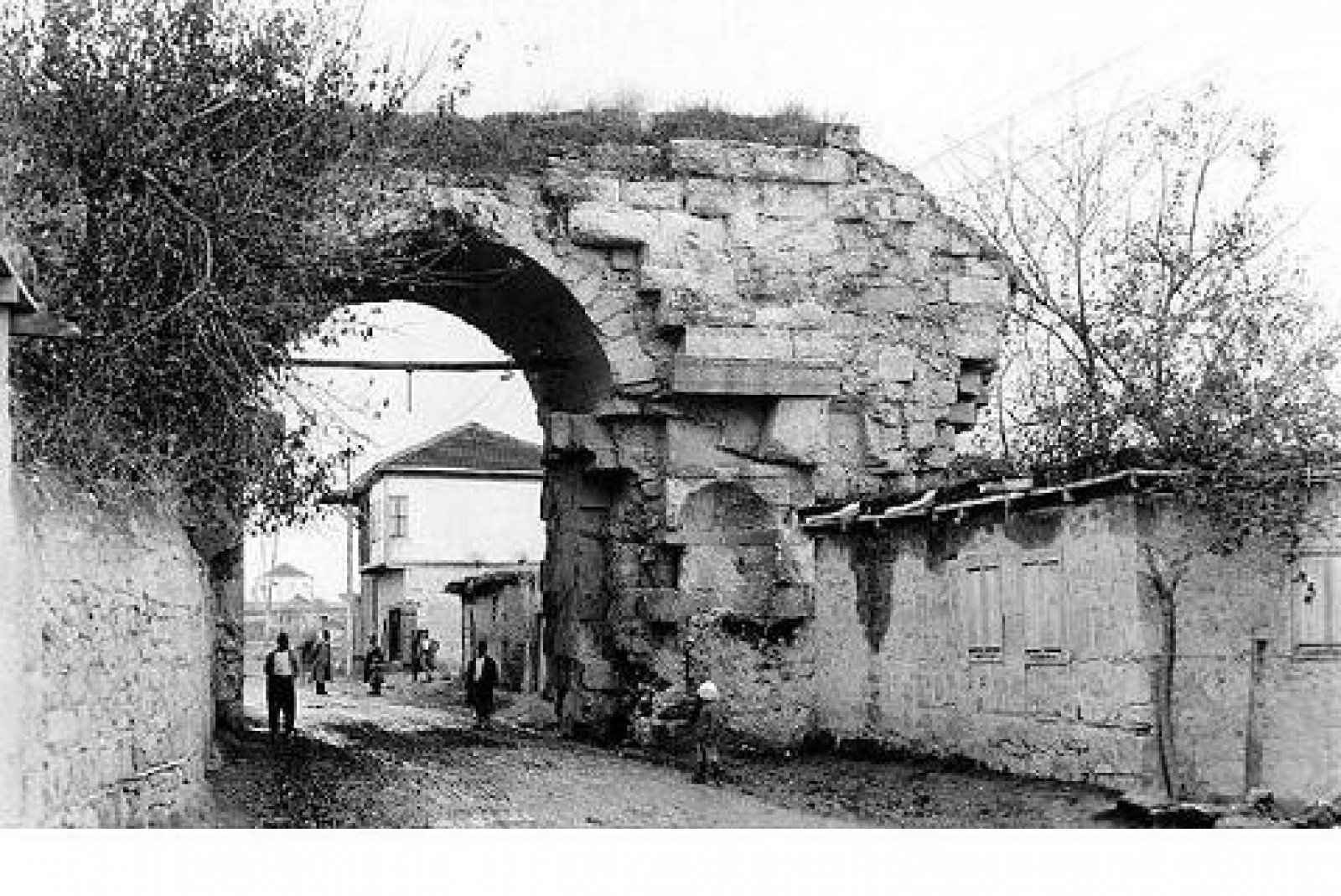
Resim-6:Tarsus
1934–1939 yılları arasında Amerikalı arkeolog Hetty Goldman tarafından Gözlükule’de yapılan kazılar neticesinde, Tarsus’un çok eski dönemlerden beri bir yerleşim yeri olduğu anlaşılmıştır. Bu kazılarda Neolitik döneme ait kalıntılar bulunmuş, ancak şehrin ne zaman ve nasıl kurulduğu bilinmemektedir. Bu duruma göre de Tarsus’un, belli bir tarihte belli kimseler tarafından kurulmayıp başlangıçta küçük bir yerleşim yeri iken daha sonraları yavaş yavaş ekonomik ve stratejik bir yer olması nedeniyle gelişen bir şehir halini almış olduğu yargısı ön plana çıkmaktadır. Tarih boyunca Kizzuwatna, Kue, Asur, Pers, İskender, Selevki, Mısır, Roma ve Sâsânî hâkimiyetinde kalan Tarsus, Bizans döneminde havâri Saint Pavlus’un buralı olmasından dolayı dinî bir merkez özelliği kazanmıştır. I. Justinianos’un imar ettirdiği Tarsus, Halife Ömer devrinde 637 yılında İslâm topraklarına katılmıştır. 1877’de Adana’nın Halep Vilayeti’nden ayrılması sonucunda Tarsus, Adana Vilayeti’nin Adana Sancağı’na bağlı bir kaza merkezi haline gelmiş, Cumhuriyet döneminde Mersin (İçel) Vilayet merkezi olunca Tarsus buraya bağlı bir ilçe merkezi olmuş ve halen bu durum devam etmektedir.
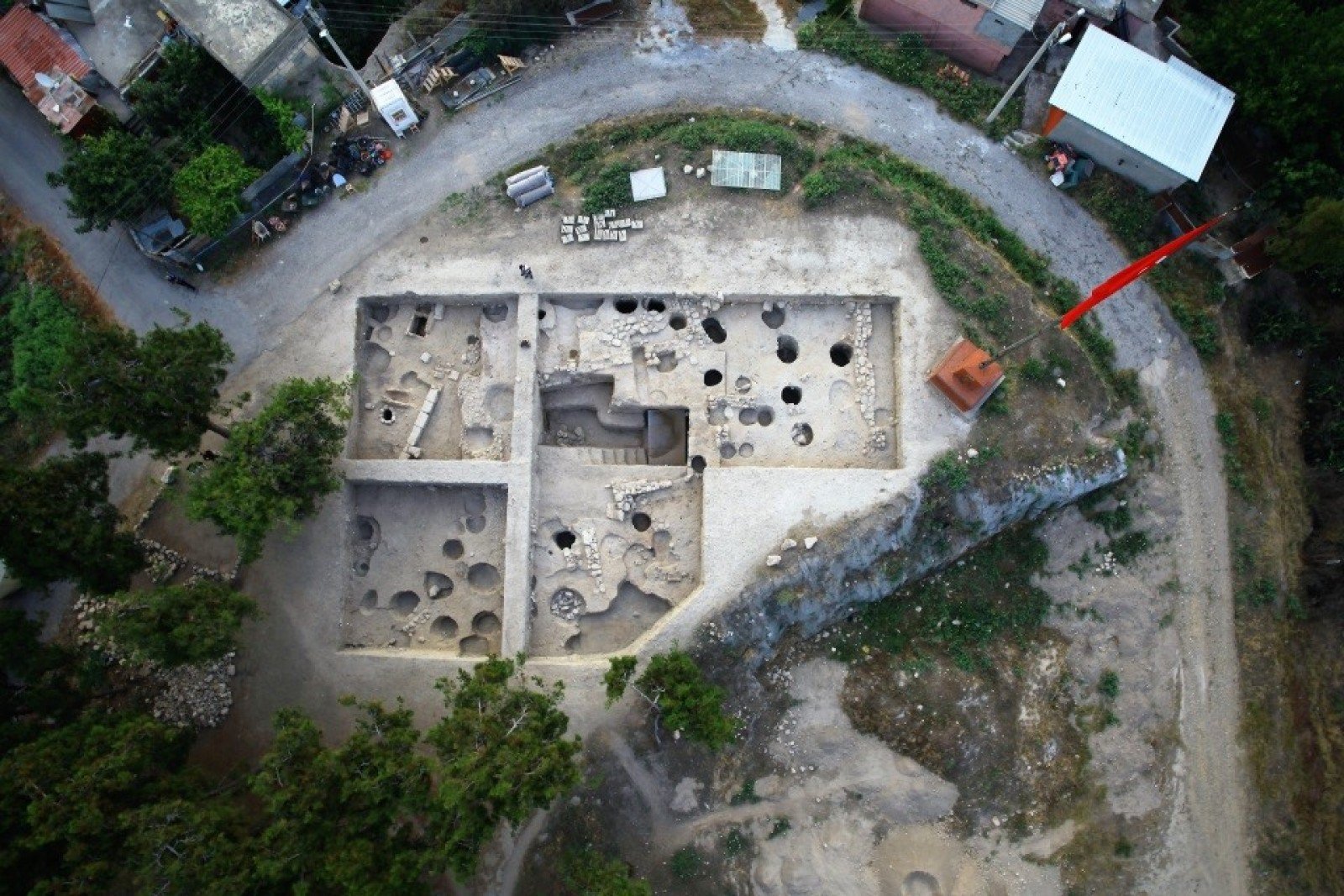
Resim-7:Gözlukule Kazıları
Tarsus ve çevresi, tarih boyunca yoğun nüfuz mücadelelerine sahne olmuştur. Tarsus’un zenginliği sadece konumuna ve bulunduğu coğrafyaya değil; aynı zamanda farklı yerlerden gelen ve değişik kültürlere sahip insanların bu kentin yaşamına olan katkılarına da bağlıdır. Kentin eski halklarını Luwi-Hititlerden başlayarak Suriyeliler, Fenikeliler, İyonyalılar, Grekler, Yahudiler ve daha sonra Romalılar gibi deniz aşırı yerlerden gelmiş başka topluluklar oluşturmuş ve bu çeşitlilik Tarsus’ta zengin bir kültürün oluşmasına katkıda bulunmuştur. Tarsus, kent tarihi açısından bir süreklilik taşımaktadır. Anadolu’nun en eski şehirlerinden olan ve tarih boyunca üzerinde kesintisiz bir süreçte muhtelif kavimleri barındırarak varlığını sürdüren Tarsus, tarihsel açıdan kurulduğu günden bugüne stratejik önemini muhafaza edebilen ve adı değişmeden günümüze kadar gelebilen dünyanın en eski ve nadir kentlerinden biridir.
KAYNAKLAR
1-Sacit Uğuz. Meşrûtiyet’ten Cumhuriyet’in İlk Yıllarına Tarsus. (1876-1926). Doktora Tezi. 2011
2- Azra Erhat. Mitoloji Sözlüğü, Remzi Kitabevi, İstanbul 2001, s. 72-74
3-Afif Erzen. Tarsus Kılavuzu: Günümüz Türkçesiyle. Aratos Kitaplığı, Mersin 2007, s. 7
4-Levent Zoroğlu. “Luwilerden Çukurovalılara Adı Değişmeden Kalan Tarsus”, Sırtı Dağ, Yüzü Deniz: Mersin. Yapı Kredi Yayınları. İstanbul, 2004, s. 92-101
5-Ksenophon, Anabasis (Onbinlerin Dönüşü), Hürriyet Yayınları. İstanbul 1974, s. 21
6-Hikmet Öz, Tarsus Tarihi, Tarsus Belediyesi Yayınları. Tarsus 2007, s. 50
7-Strabon, Antik Anadolu Coğrafyası, Geographika, XII, XIII, XIV, Arkeoloji Sanat Yayınları. İstanbul 1993
8-Levent Zoroğlu. Tarsus Tarihi ve Tarihsel Anıtları. Adana 1995, s. 14
9-Şemseddin Sami. Kamusü’l A‘lâm, Cilt IV, Kaşgar Neşriyat, Ankara. 1996, s. 3009
10-Şükrü H. Akalın. “Tarsus Tarihine Ait Bir Risale”, İçel Kültürü,Mersin. 1990, sayı: 11, s.3
11-Ahmet Akgündüz-Yaşar Baş-Rahmi Tekin-Osman Kaşıkçı, Arşiv Belgeleri Işığında
Tarsus Tarihi ve Eshâb-ıKehf, Tarsus Ticaret ve Sanayi Odası Yayınları, İstanbul 1993, s. 12
12-Evliya Çelebi Seyahatnamesi, cilt 9, (Hazırlayanlar: Yücel Dağlı, Seyit Ali Kahraman, Robert Dankoff), Yapı Kredi Yayınları. İstanbul, 2005, s. 166
13-Hikmet Öz. Bilinmeyen Tarsus, Kültür Bakanlığı Tanıtma Eserleri, Türk Tarih Kurumu Basımevi. Ankara, 1998, s. 84
14-Hikmet Öz. Tarsus Tarihi, Tarsus Rotary Kulubü ve Tusev Vakfı. Tarsus, 1991, s. 23
15-Melin Hayfa. Bir Kent Bir Doku. TARSUS. KKTC Yakın Doğu Üniversitesi Fen ve Edebiyat Fakültesi Türk Dili ve Edebiyatı Bölümü. Bitirme Çalışması. Lefkoşa, 2002
16-www.tarsustarihi.blogspot.com› 2008/03 › tarsus-ismi-nereden-geliyor
17-https://www.frmtr.com/tarih-ve-inkilap-tarihi/705933-tarsus-tarihi.html
18-http://tarsus.meb.gov.tr/meb_iys_dosyalar/2016_04/12020448_tarsusuntarh.pdf
19-http://tarsus.meb.gov.tr/meb_iys_dosyalar/2016_04/12020448_tarsusuntarh.pdf
20-http://apbs.mersin.edu.tr/files/songululutas/Theses_001.pdf
ORIGINS OF THE NAME TARSUS FROM MYTHOLOGY TO THE PRESENT DAY
Tarsus is one of the oldest cities of Anatolia whose name and location have never changed from the day it was founded until today. Many studies have been made about the origins of the name of Tarsus which has hosted many civilizations with its history of 8000 years. There is various information about the name and foundation of Tarsus in mythological, oral and written sources. Most of these narrations are not accepted as historical truth and some of them are considered as legends and they take us to mythology. In the ancient ages, the local people of Cilicia gave the name Cydnus to the Tarsus river. Cydnus is the name given to the river god in mythology. In her Mitoloji Sözlüğü (Dictionary of Mythology), Azra Erhat writes ‘’CYDNUS: The god of the river known as the Tarsus river in Cilicia. He is regarded as the grandchild of Lapith from his mother’s side. Cydnus had a son named Parthenios. They founded a city where the river Cydnus emptied into the sea and they named it Parthenia.’’ about Cydnus.
According to the records of the historians, search results and another narration of Greek Mythology, Tarsus took its name from Pegasus (flying horse with wings) or Bellerophon. Pegasus or Bellerophon got lost in the Cilician Plain and Bellerophon was crippled in the place where the plain of Tarsus is located today. Bellerophon lived in Tarsus for a long time because of this problem he experienced and the life of Pegasus strangely ended in this city. The city was called TARSOS which meant foot sole in Latin because Bellerophon was crippled where the city was located and this name has become Tarsus today.
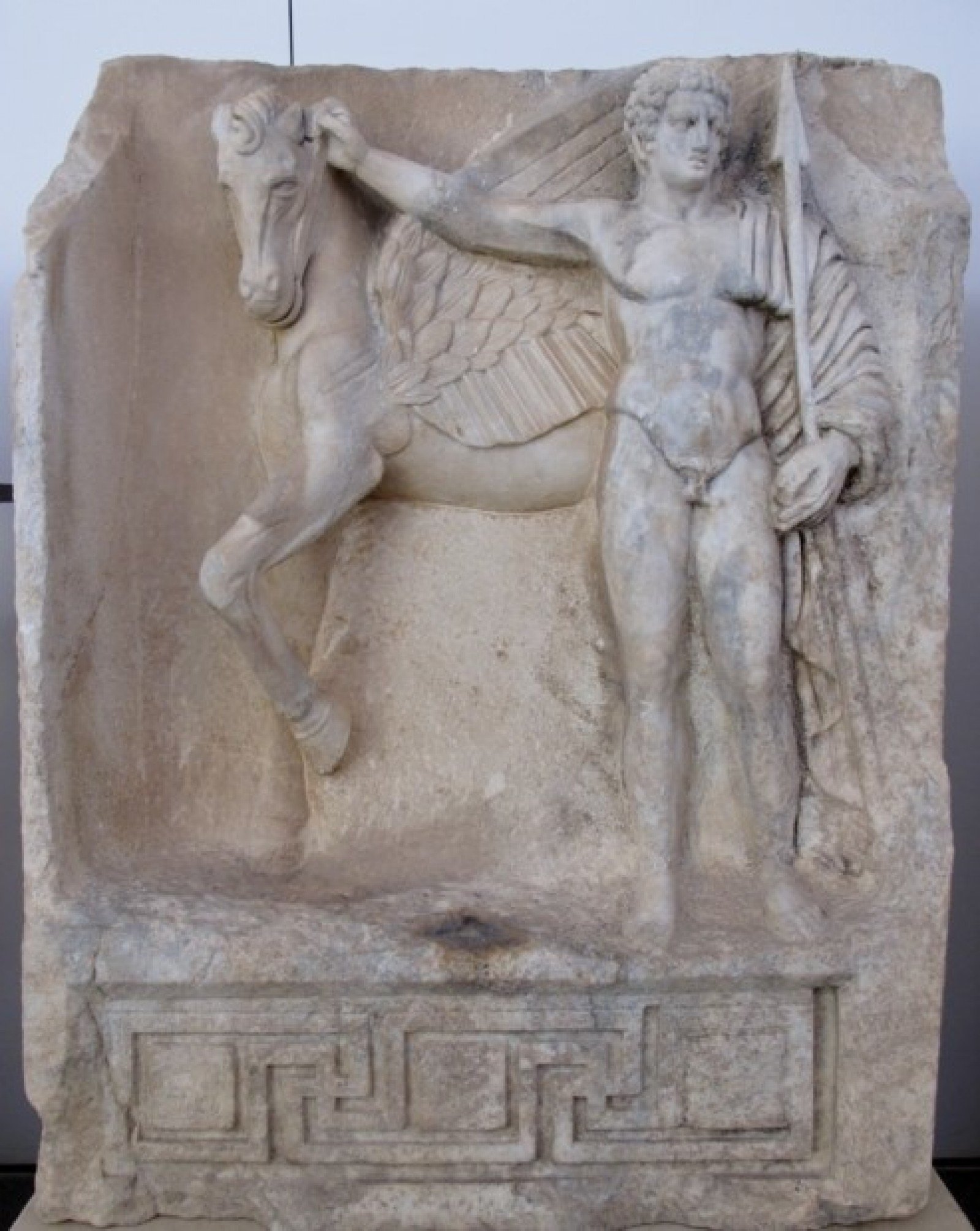
Picture 1: Pegasus stayed in Tarsus for a long time when it was crippled. The city was named TARSOS which meant foot sole in Latin.
According to another myth, the founder of this city is Perseus. Perseus, who was a mythological hero, founded the city of Tarsus in the place of a village which was known as Andrasos in the Hittite era. According to the Greek myth, Perseus built the city of Tarsus where he saw he lost his foot sole while he was getting off his horse in his dream. According to the legend, Perseus built the city of Tarsus where he lost his foot sole while he was getting off his horse in his dream. The name Tarsus also found itself a place in human anatomy. Tarsus as the name of the city and the foot sole in the myth are the same with the Word TARSUS which means human foot sole or the part forming the metacarpus in human anatomy. The name Tarsus has taken its place in mythology, human anatomy and as the name of a city, as something unique in world history.

Picture-2: Anatomically, Tarsus is the name given to the soles of the feet.
According to another myth, Tarsus was founded by Triptolemus, son of Demeter, goddess of agriculture. Tarsus was an important agricultural center in the Ancient Age and this characteristic of its was depicted in ancient Tarsus coins. According to another myth, this city was founded after the Flood was named Tersein (to dry). The first city founded after the Flood was here. This city is Tarsus today.
Although the exact date of the foundation and the founders of the city of Tarsus are unknown, there are different views about these topics. Tarsus, which was completely an Eastern city where Eastern culture was dominant, was Hellenized during the Hellenistic and Roman eras, especially by Romans. Greek researchers went into the effort of including the foundation of the city in their mythological elements. According to the Greek myth, the founder is Hercules whom they identify with Sandon, the Cilician god. The pictures of Hercules are seen on Tarsus coins of the 4th century B.C. as Sandon (BAAL TARZ), in other words, the city god. It is generally considered that Sandon is a very old Cilician deity. The dedication of the foundation of the city to such an old deity means that its history goes to very ancient times. The bronze statue of Hercules which was found in 1875 in Eski Ömerli district of Tarsus and which is now exhibited in İstanbul Archaeological museum is proof of the cult of this deity in Tarsus. Strabo, the ancient writer who was born in Amasya in 64 B.C. had the same efforts of including the foundation of the city in Greek mythology and history. He wrote that Tarsus was founded by Argives in his Geography of Asia Minor: ‘’As for Tarsus, it extends on a plain. It was founded by Argives who traveled with Triptolemus to look for Io.’’ The name of Tarsus was formerly used as Greek Tarsos and later Latin Tarsus.
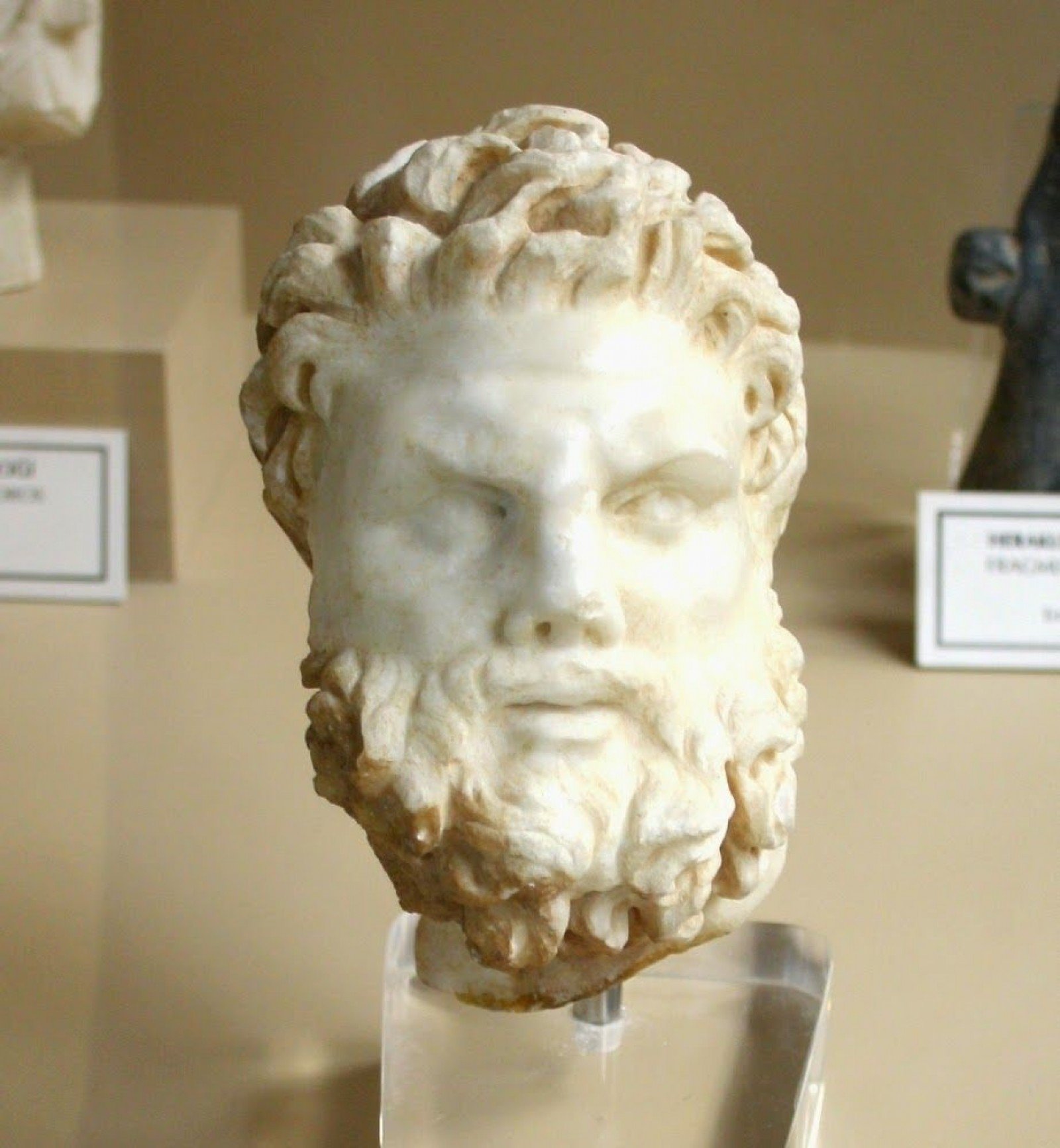
Picture 3: The statue of Hercules in İstanbul Archaeological Museum.
The name of the city was written as TAR-SHA (URU-TAR-SA) for the first time in Hittite texts. Tarsha was probably the center of the Kingdom of Kizzuwatna founded by Hurrians in Northern Mesopotamia, comprising the whole Cilicia. We see that Tarsus has the character of an Eastern city both culturally and ethnologically in the 4th and 5th centuries B.C.
Although the existence of some Greek people was apparent among the people of Tarsus during these centuries, they were people who came to Tarsus and settled here only for trade and they were a minority. The existence of Greek coins seen beginning from the second half of 5th century B.C. and rather from 4th century B.C. indicate the probability of their being minted by great trade companies for economical reasons and thus trade. The name Tarsus is mentioned in Xenophon’s Anabasis in 401 B.C. and it is written that the city is the administrative center of King Syennessis of Cilicia. The name of the city is seen as TARZ and TEPEI in Aramaic and Greek scripts from the second half of the 5th century B.C. on Tarsus coins. However, the name Tarsus is rather seen in Assyrian sources of earlier times, in the documents of Assyrian Kings Salmanasar III (859-825 B.C.) and Sennacherib (704-681 B.C.) as TARZI. According to ancient writers Abydenus and Beresus, Assyrian King Sennacherib built Tarsus in 696 B.C. taking the city of Babel as an example. In another Assyrian text of the same period, the name of the city is written as Tarsus. So, it means that the name Tarsus and the city of Tarsus as the center of the principality of Cilicia are mentioned in the official documents about the campaigns of the Assyrian King Salmanasar III to Cilicia. They belong to the first half of the 9th century B.C. The name Tarsus is also seen on the Persian coins minted in Tarsus.
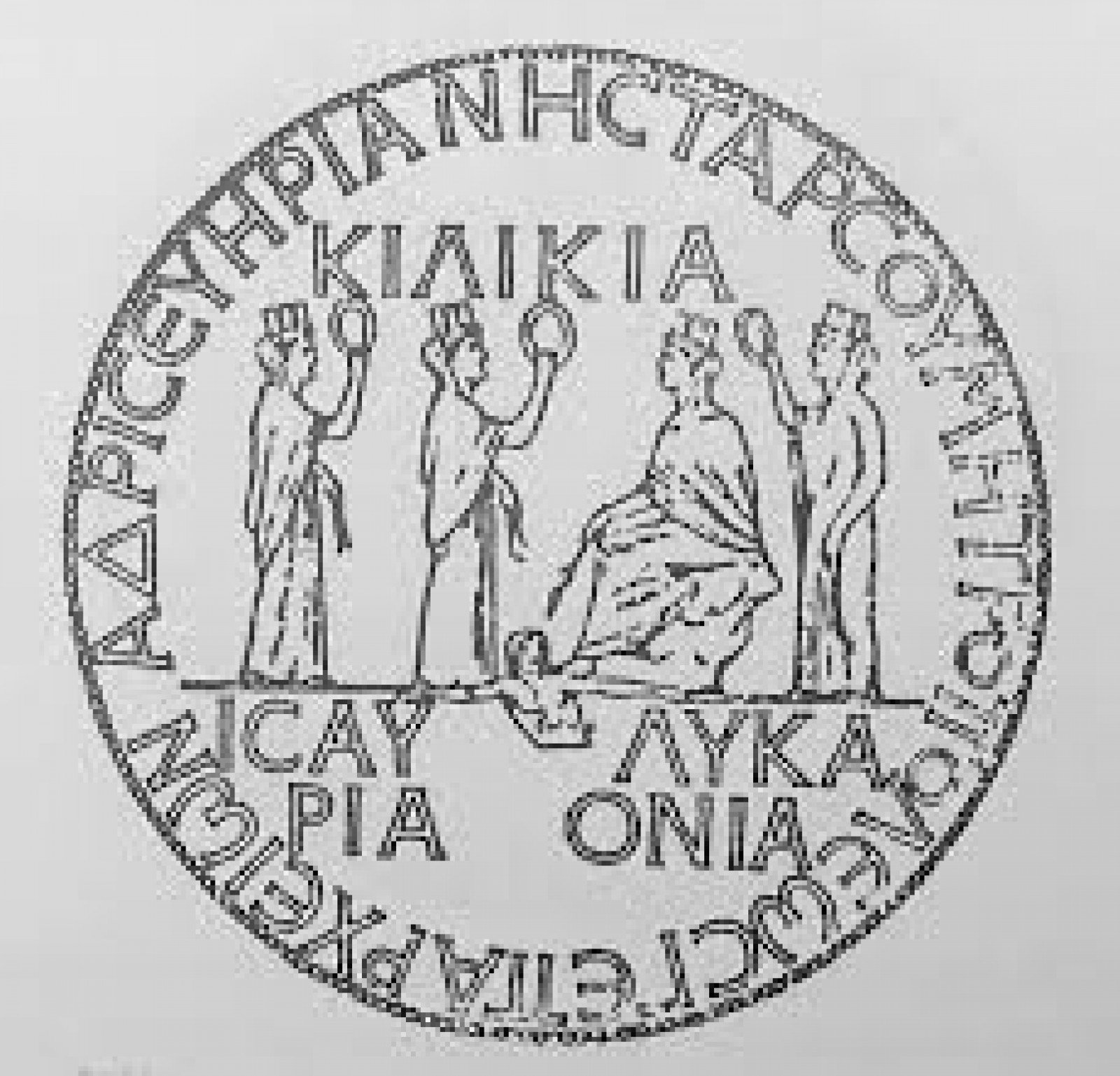
Picture 4 – Cilician coins
Almost all of the Greek myths about the name and the foundation of Tarsus belong to the Roman era. However, it has been found that Tarsus is a city which also has existed since very ancient times and this hearsay has lost its validity with the researches made. Since Tarsus was regarded as an administrative center in the 8th and 9th centuries B.C. during the Assyrian era, the foundation and the name of Tarsus should go to earlier times. The name Tarsus is probably derived from TARCHON or TARCON, an ancient Cilician deity. This god is indicated as TARCHONDAS in Hittite texts. The name of the prince of the Kingdom of ARZAVA who had political relations with Amenophis IV of Egypt was TARCHONDARABA. Cilicia was included in this Kingdom of ARZAVA during the Hittite era and before. Other than these, many personal names such as TARKU, TARCHON and other names made with these roots appear in the inscriptions found in Cilicia. If we accept that the name of Tarsus is derived from TARCHON or TARKON, we see that it became TARZI in Assyrian, TARZ in Aramaic, TERSI (TEPIKON) in Greek and at last TARSOS in Latin. The Seleucidae changed the name of the city as Antiochea ad Cydnus during the reign of Antiochus I or II. The name Tarsos was used again during the reign of Antiochus Philopater IX (113-95 B.C.).
The name TARSOS is written on the coins of 1st century B.C. Tarsus was named after various emperors during the Roman era. These names or nicknames gave Tarsus various privileges depending on the emperors’ lives. Tarsus was built again and measures were taken to increase the people’s living standards. These improvements were made by the emperors. These names or nicknames are HADRIANE after Hadrian, COMMODIANE after Commodius, SEVERIANE after Severius, ANTONINIANE after Caracalla (M. Aurelius Antoninius), SEVERIANE after Severius Alexander and GORDIANE after Gordion during his reign.

Picture 5: Cilician coins
Different views are propounded about the founders of Tarsus in Turkish-Islamic researches. Tarsus is recorded as TERSİS and TARSUS in Arabian and Ottoman sources. There are many explanations about the name of Tarsus in Arabic sources and the books written by Oriental historians. In Ruhul-beyan, one of them, it is written that: ‘’…that city is Tarsus. It was EPHSUS during the Pre-Islamic age of ignorance.’’ It is also called Tarasus in some Arabic sources. Tarsus is mentioned in a manuscript whose writer is unknown as follows: ‘’… And its name is Ephsus in the Old Testament and Arsus in the New Testament. And it is Tarsus in Arabic language.’’ According to the legend found among the results of Islamic researches, Tarsus was founded by Seth, son of Adam and his grave was in Tarsus. 19th-century Turkish writer Şemsettin Sami remarked that Tarsus was founded by Phoenicians. Tarsus was founded by TARASIS, grandson of Noah, according to the Arabic history ‘’Miratüliber.’’ 17th-century Turkish traveler Evliya Çelebi wrote that Tarsus was built by TARSUS, son of Rum, son of Bakan, son of Sam, son of Noah according to an account, in his Seyahatname (Travel Book). According to an epistle which was found to be written in Dhu al-Hijjah 1153 (March 4th, 1741) by an unknown writer, Laon, son of Japeth, grandson of Noah, had four sons. Their names were Ayas, Misis, Adana, and Tarsus. It was remarked that the city of Tarsus was built by the son of this Laon and its name was derived from his name. In the entry of Tarsus in his work written for a geographical encyclopedia, Yakut El-Hamevi writes that the name Tarsus is a Greek word and spelling it such as Tarsus is wrong and its original form is TERASUS and Evliya Çelebi shares the same view.
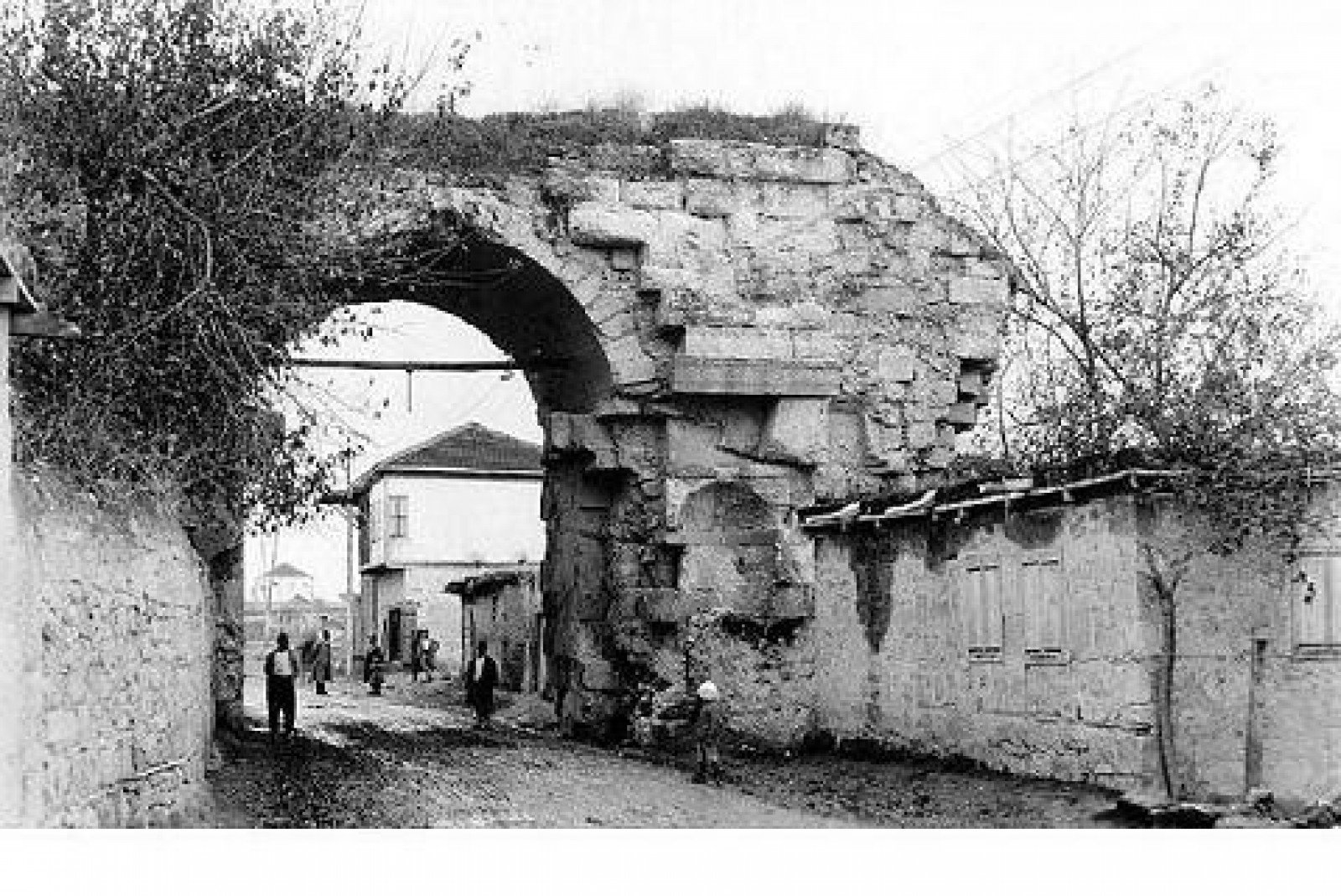
Picture-6:Tarsus
In consequence of the archaeological excavations made by American archaeologist Hetty Goldman at Gözlükule between 1934 and 1939, it was understood that Tarsus was a settlement in very ancient times. Neolithic remnants were found during these excavations but when and how the city was founded is unknown. Also according to this result, it has been prominent that Tarsus was not founded at a definite date by definite people but it was founded as a small settlement and then it developed slowly to be a city. Tarsus, which came under the dominations of Kizzuwatna, Que, Persia, Alexander the Great, Seleucidae, Egypt, Rome and Sasanides throughout history, gained the characteristic of being a religious center because of Apostle St. Paul of Tarsus during the Byzantine era. Tarsus, which was improved by Justinian I, joined the Islamic land in 637 during the reign of Caliph Omar. As a result of Adana’s separation from the province of Aleppo in 1877, Tarsus became a district of the Sanjak of Adana connected to the Province of Adana. When Mersin (İçel) became a province center in the Republic era, Tarsus became a district connected to here and this situation still goes on.
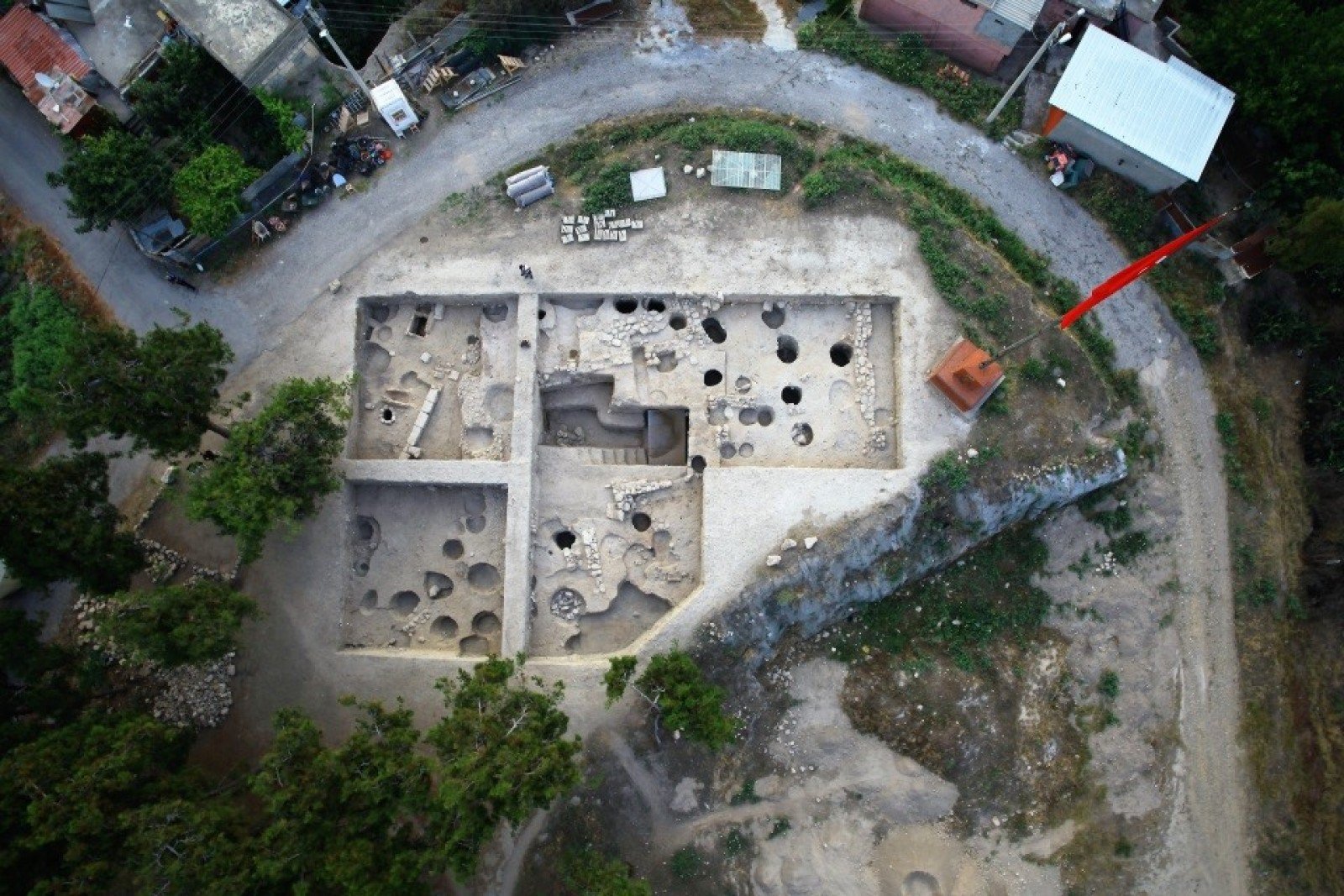
Picture-7: Archaeological Excavations at Gözlükule
Tarsus and its environs have been the stage of struggles of influence throughout history. The richness of Tarsus is not only because of its geographical location but it is also because of the contributions of the people coming from different places with different cultures to the life of this city. Beginning from Luwi-Hittites; Syrians, Phoenicians, Ionians, Greeks, Jews and then other groups coming from overseas such as Romans formed the old peoples of the city and this variety has contributed to the formation of a rich culture in Tarsus. Tarsus has continuity in terms of urban history. In terms of history, Tarsus, which is one of the oldest cities in Anatolia and which has continued its existence in an uninterrupted process throughout history hosting various nations, is one of the oldest and rarest cities in the world. It has been able to keep its strategic importance today and its name has never changed throughout this history.
WORKS CITED
1-Sacit UĞUZ. Meşrûtiyet’ten Cumhuriyet’in İlk Yıllarına Tarsus. (1876-1926). Doktora Tezi. 2011
2- Azra Erhat. Mitoloji Sözlüğü, Remzi Kitabevi, İstanbul 2001, s. 72-74.
3-Afif Erzen. Tarsus Kılavuzu: Günümüz Türkçesiyle, Aratos Kitaplığı, Mersin 2007, s. 7;
4-LeventZoroğlu. “Luwilerden Çukurovalılara Adı Değişmeden Kalan Tarsus”, Sırtı Dağ, Yüzü Deniz: Mersin. Yapı Kredi Yayınları, İstanbul, 2004, s. 92-101.
5-Ksenophon, Anabasis (Onbinlerin Dönüşü), Hürriyet Yayınları, İstanbul 1974, s. 21.
6-Hikmet Öz, Tarsus Tarihi, Tarsus Belediyesi Yayınları, Tarsus 2007, s. 50.
7-Strabon, Antik Anadolu Coğrafyası, Geographika, XII, XIII, XIV, Arkeoloji Sanat Yayınları, İstanbul 1993.
8-Levent Zoroğlu. Tarsus Tarihi ve Tarihsel Anıtları ,Adana 1995, s. 14,
9-Şemseddin Sami. Kamusü’l A‘lâm, Cilt IV, Kaşgar Neşriyat, Ankara, 1996, s. 3009.
10-Şükrü H. Akalın. “Tarsus Tarihine Ait Bir Risale”, İçel Kültürü,Mersin 1990, sayı: 11, s.3.
11-Ahmet Akgündüz-Yaşar Baş-Rahmi Tekin-Osman Kaşıkçı, Arşiv Belgeleri I şığında
Tarsus Tarihi ve Eshâb-ıKehf , Tarsus Ticaret ve Sanayi Odası Yayınları, İstanbul 1993, s. 12.
12-Evliya Çelebi Seyahatnamesi, cilt 9, (Hazırlayanlar: Yücel Dağlı, Seyit Ali Kahraman, Robert Dankoff), Yapı Kredi Yayınları, İstanbul, 2005, s. 166.
13-Hikmet Öz. Bilinmeyen Tarsus, Kültür Bakanlığı Tanıtma Eserleri, Türk Tarih Kurumu Basımevi, Ankara, 1998, s. 84;
14-Hikmet Öz. Tarsus Tarihi, Tarsus Rotary Kulubü ve Tusev Vakfı, Tarsus, 1991, s. 23.
15-Melin Hayfa. Bir Kent Bir Doku. TARSUS. KKTC Yakın Doğu Üniversitesi Fen ve Edebiyat Fakültesi Türk Dili ve Edebiyatı Bölümü. Bitirme Çalışması. Lefkoşa,2002
16-www.tarsustarihi.blogspot.com › 2008/03 › tarsus-ismi-nereden-geliyor
17-https://www.frmtr.com/tarih-ve-inkilap-tarihi/705933-tarsus-tarihi.html
18-http://tarsus.meb.gov.tr/meb_iys_dosyalar/2016_04/12020448_tarsusuntarh.pdf
19-http://tarsus.meb.gov.tr/meb_iys_dosyalar/2016_04/12020448_tarsusuntarh.pdf
20-http://apbs.mersin.edu.tr/files/songululutas/Theses_001.pdf
 23820
23820







 SHAKESPEARE’NİN TARSUS’U
08.10.2018 tarihinde yayınlandı ve 50978 kez okundu.
SHAKESPEARE’NİN TARSUS’U
08.10.2018 tarihinde yayınlandı ve 50978 kez okundu.






Yorum yap